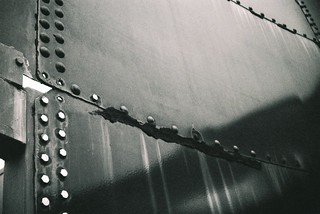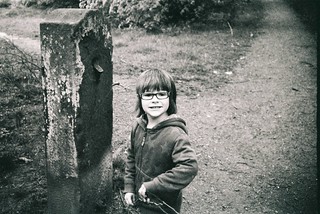
This gorgeously bonkers 35mm compact hails from 1980’s Soviet union but looks like a mix of 60’s & 70’s with its bling gold styling and Olympus Trip-esque selenium meter array. A relative rarity in the west it does make for quite an interesting & useful choice for a point and shooter.
FED is best known for its series of excellent Leica like rangefinder but it did produce a series of delightful compacts. The FED 50 is a wonderful example of this from the mid 80’s. The body is shared with the FED 35 & 35A Rangefinders which were close copies of the Konica C35. But whilst those used CdS metering the FED 50 uses the more dated but battery free selenium array seen on it’s historic half frame predecessor the FED mikron I.
Specs
- Lens: 38mm 1:2.8
- Focus: Scale or Zone (4)
- Shutter: 1/30-1/650 sec + B
- Aperture: f/2.8 – f/16
- Exposure: Auto
- EV (100asa) : 8-17
- ASA: 16-400ASA
- Filter-Thread: 46mm


Let’s leave the styling aside for the moment. It’s a point and shoot camera with both scale focus and weirdly 4 zone pictograms in the viewfinder that will be instantly recognisable to any LC-A users. Usage is pretty similar to the Trip and 70s -80’s compacts. In the most part you’ll leave the aperture setting set at A for Automatic set your focus and shoot. In the viewfinder is a needle meter readout of shutter/f-stops combos like you get on most 70’s compacts.
Half press the shutter button to display and lock the current perceived setting. If the light is too low the shutter locks although this doesn’t always seem reliable.

You can knock the aperture setting round to f-stops for flash and to bulb (B) setting which locks the aperture at f/2.8. You try to use the flash settings for low light (<EV8)

Many feel it slightly under exposes & reduce film speed by 1/2 -1 stop but I’ve dropped a stop and noticed little difference and modern film tolerates a step or 2 out

Its two obvious comparisons are the Trip and the Lomo LC-A. I suspect if selenium cells had remained the norm, Olympus would have produced something like this down the line. Lens-wise is an unfair comparison as the Zuiko lens on the trip is peerless for P&S.

That said the industar-81 lens is pretty good (FED knew a thing or 2 about lenses). It has more naturalistic tones than a LC-A’s mintar-1. This more of a fair comparison with both cameras having strengths and weaknesses. The FED obviously has slightly more scope with scale focus, filter threaded and a proper bulb with a cable release. The LC-A has the ability to do insanely long automatic exposures of up to 2 mins and it’s ‘vivid’ lens.

I like the FED 50 a lot. Good in both colour and B&W.
My only gripes are it’s easy to nudge the film speed setting off and it has a more fiddly slip in on the film take up reel.

Relatively rare in Western Europe but found on ebay from sellers in the FSU for between £10-£20 often with refund option and CLA’d. Still cheaper than a Lomo LC-A. You ‘ll need a lens cap although unlike the Olympus Trip 35 the filter thread is a more industry standard 46mm so getting a cheap one is easier. Make sure the metering is working. Seals are more felt based so less likely to be deteriorating.
Alternatives
- Olympus Trip 35 – the classic Selenium metered P&S
- Fujica 35 Automagic– 50′ selenium driven P&S fun
- Lomo LC-A – The more famous soviet P&S
- Smena 8m (or any other smena) – Classic manual USSR P&S
Helpful links
- Manual at Mike Butkus’s Site
- FED 50 Flickr group
- FED 50 at sovietcameras.com

10 thoughts on “FED 50 Review: The shape of things that might have been”